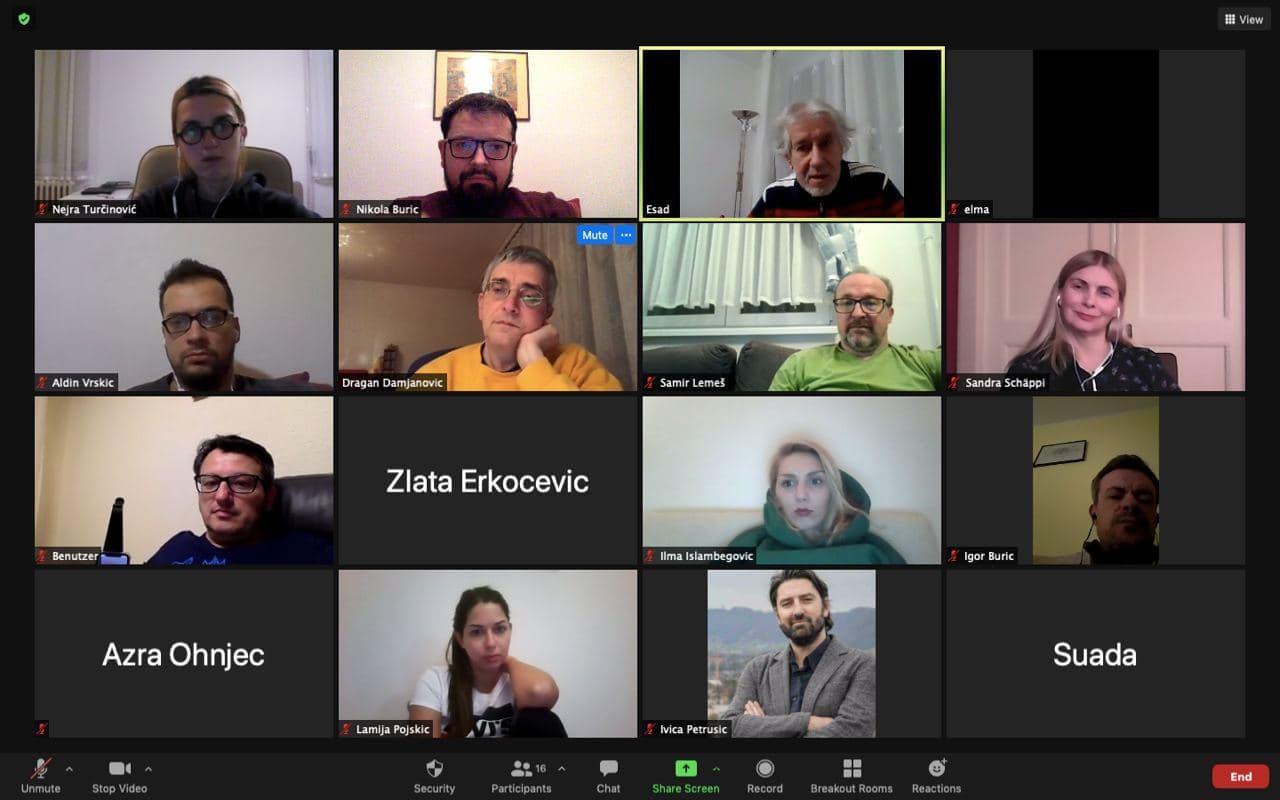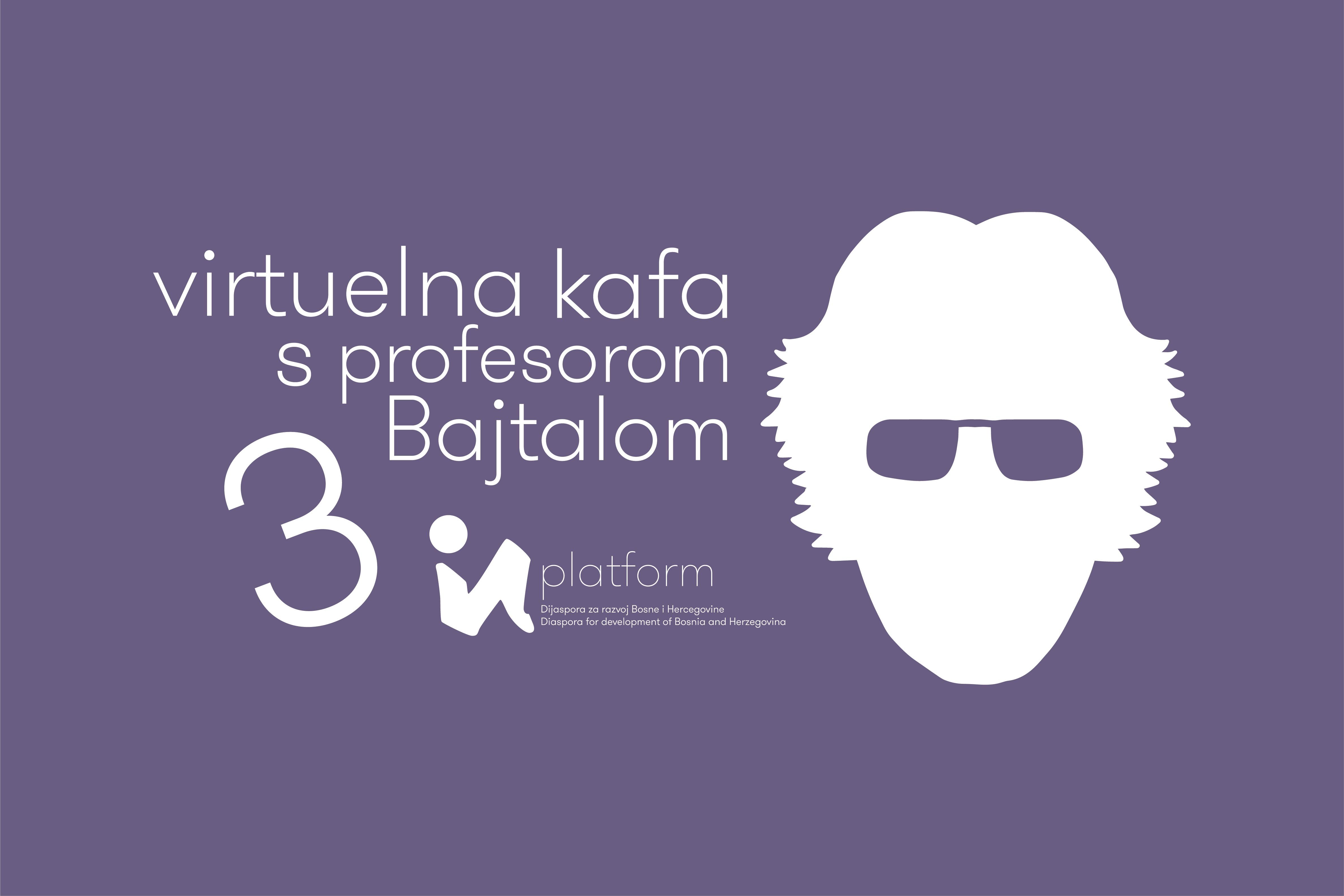This year's gathering with Esad Bajtal was finalized with a story about attractive Baščaršija
Once again, thanks to the i-platform representatives we enjoyed the interaction and useful information that Mr. Bajtal shared with us, but also with the friends of our organization. This time, the two-hour virtual meeting, organized via the Zoom application, was based on a story and interesting facts related to Baščaršija, the symbol of the city of Sarajevo.
Social, human and psychological phenomenon
Founded in the 15th century, the largest Sarajevo bazaar reached the peak of its development in the middle of the 17th century. Although specific in many ways, Baščaršija (formulation from the word "baš" - exactly, central; and "čaršija" - baazar) differs from many other economic districts in the world in that there is no place for habitation in its center. Its beauty is made up of commercial shops, craft and many other shops, as well as a large number of cafes.
The above-mentioned cafes were visited daily, by the most, many Sarajevo inhabitatnts, to whom merak, ćejf and hedonism, by all accounts, are autochthonous. The opportunity to smoke chibouk(cigarette holder) up to three meters long, as the professor states, was not missed.
However, Baščaršija did not only delight the local population. The great thinker Rashid Effendi once described Baščaršija with the words ... "Eyes of the Sky he has not seen a city like this, since the wheel of time began to turn ..."
At the same time, a travel writer Henrik Blum enchanted by Baščaršija, around which the city was built, and after visiting Sarajevo, wrote: ... “On the main square and in the fifty streets around the square there are probably six or seven hundred shops with goods of all kinds. Trade shops and craft shops are grouped strictly according to guilds (they call them “esnaf”) just like in Western Europe and as it was until recently in the big English cities. In the street of leather makers, which they call "Sarači", you can see beautiful goods made of colorful leather and beautiful horse equipment. Nearby are shops of all kinds of fur from wild beasts. There are many beautiful among them, that London women would give many years of life for one coat from it ... "

Baščaršija morality
Silent, of high morals and ethics - that is how the "Baščaršijaners" described themselves a long time ago. According to Mr. Bajtal, there were two moral images in this attractive bazaar.
There was a high level of trust, which is why store owners never locked their shops. Eventually, a board or batten would be placed on the door to indicate that the working hours were over. That trust, it is claimed, has never been abused.
The craftsman had high respect and self-esteem, and the given word kept them all together. Mutually correct, and at the same time unwritten rules of the guilds ruled.
Unfortunately, the craft has been disappearing more and more over time, and today only in some places can be seen rare remnants of craft production. According to Bajtal, they are only a museum attraction, but rarely a true source of income.
Sebilj
At the beginning of the year 1660, Sarajevo was filled with sebilj’s. About three hundred public fountains adorned the capital of Bosnia and Herzegovina, and in the year of 1697. they all disappeared in the fire.
However, today's sebilj was built back in the year of 1913. and is still one of the most recognizable Sarajevo symbols. It is interesting that this edifice has inspired many cities in the region and the world, therefore, a replica of Sarajevo can be found in Belgrade, in the city of Rožaje, Montenegro and in Novi Pazar, Serbia and even in St. Louis, USA. There are also indications that a replica of the sebilj will be found in a Chinese park, which is visited by about four million visitors a year.
Ćulhan
Located on the west side of Baščaršija Square, this Sarajevo street was built during the 16th century. It is only 86 cm wide, which is why it has been considered the narrowest street in the world for many years. Although it is incredibly narrow, and it is said that it is only wide enough for one person to pass through, it contains a board and numbers, which is why it is officially considered a street.
And a similar street called „Pušti me proć'"(Let me pass) is located in Kotor and is also one of the attractions of the old part of town.
And so, with interesting facts, incredible historical data, verses and evident facts, social meeting with Professor Bajtal came to an end. With positive energy a new virtual gathering has been announced, which we will organize at the beginning of next year.

